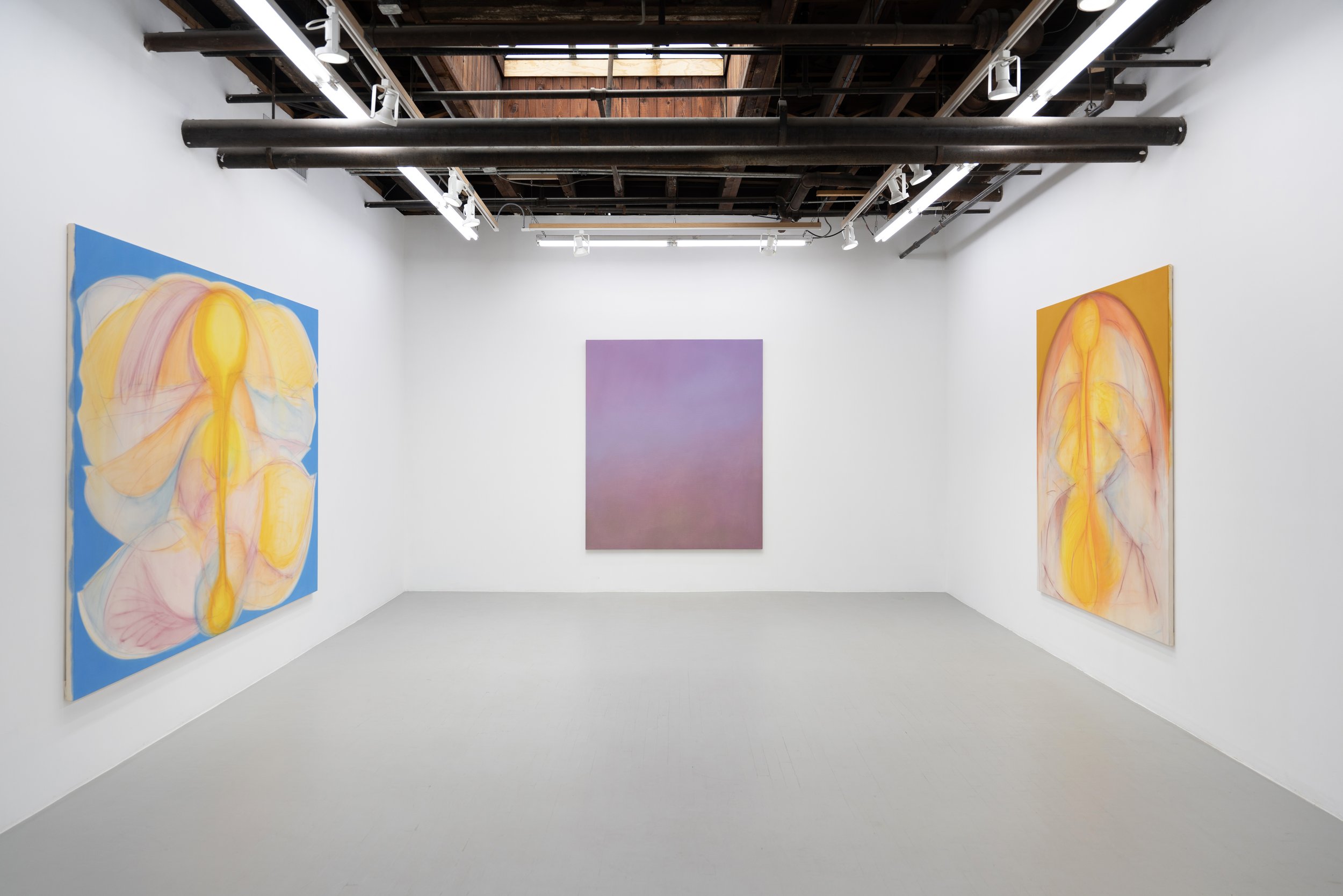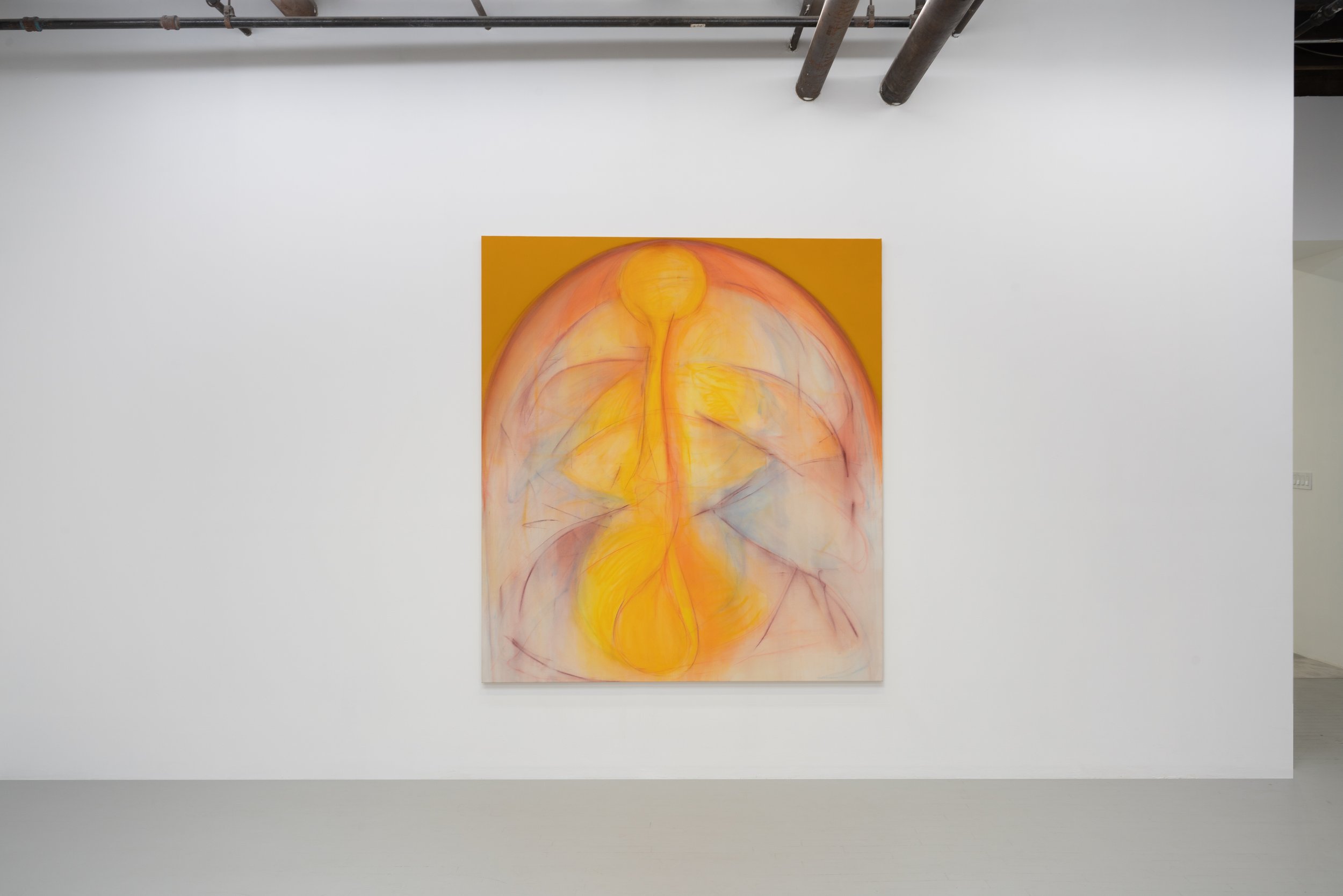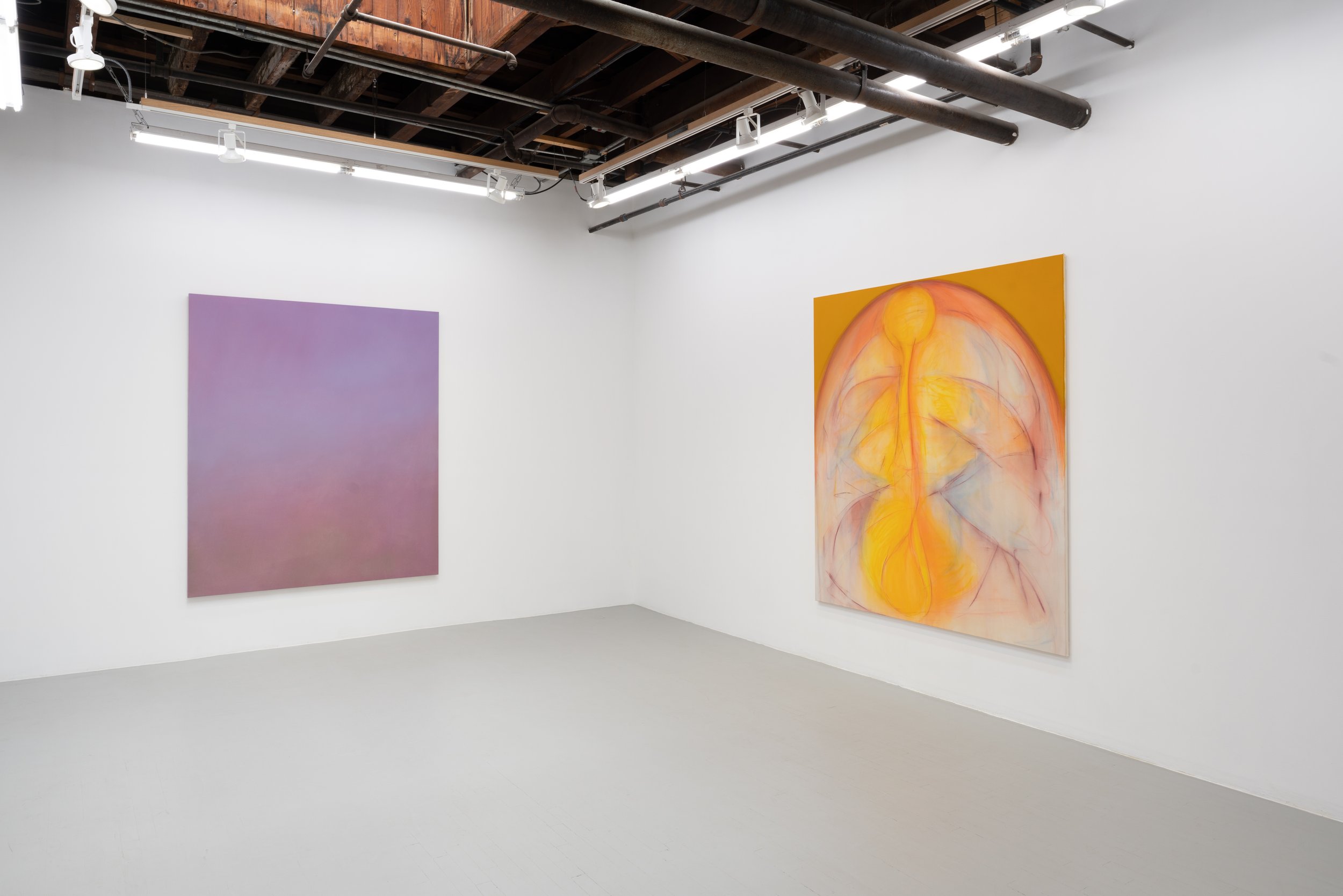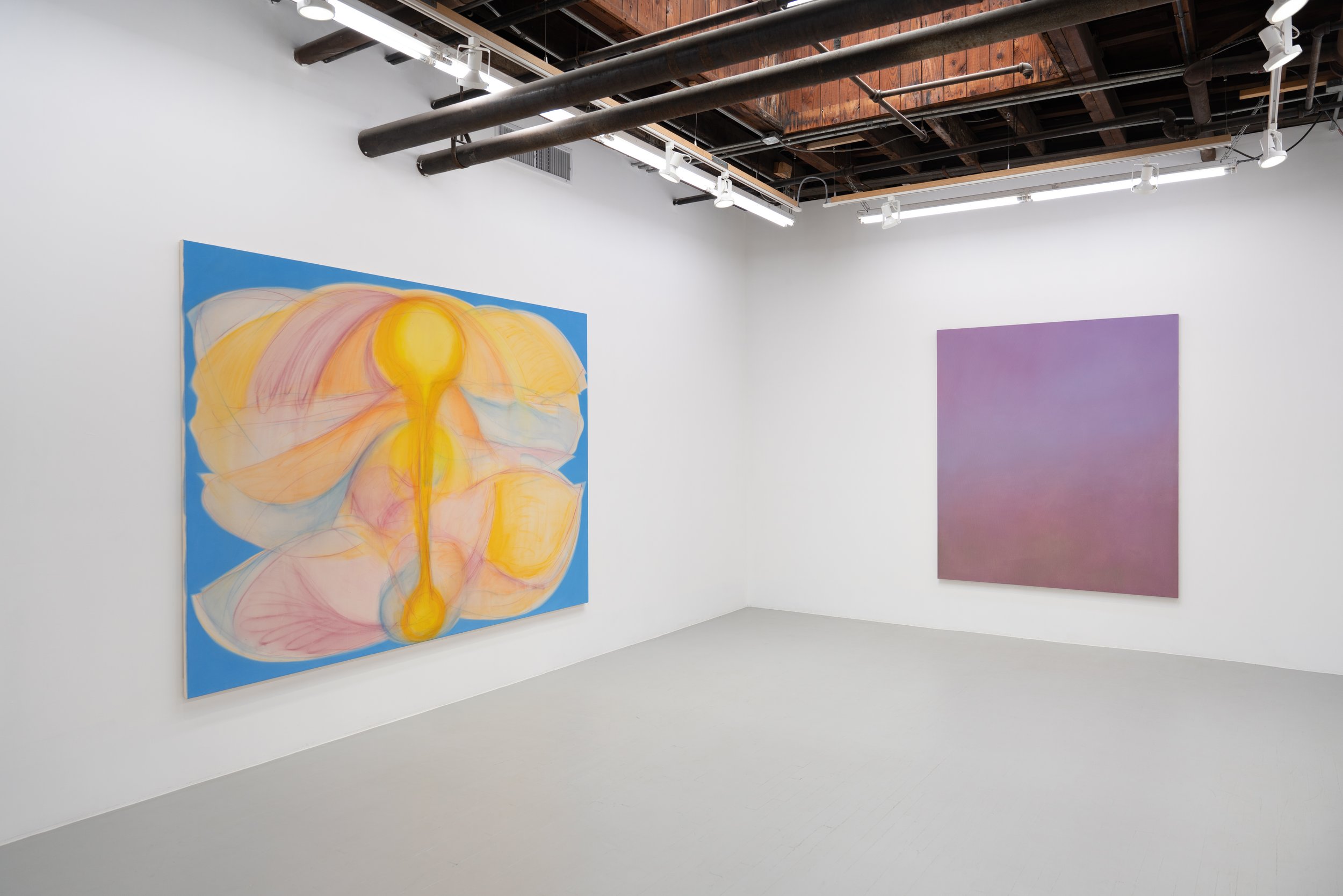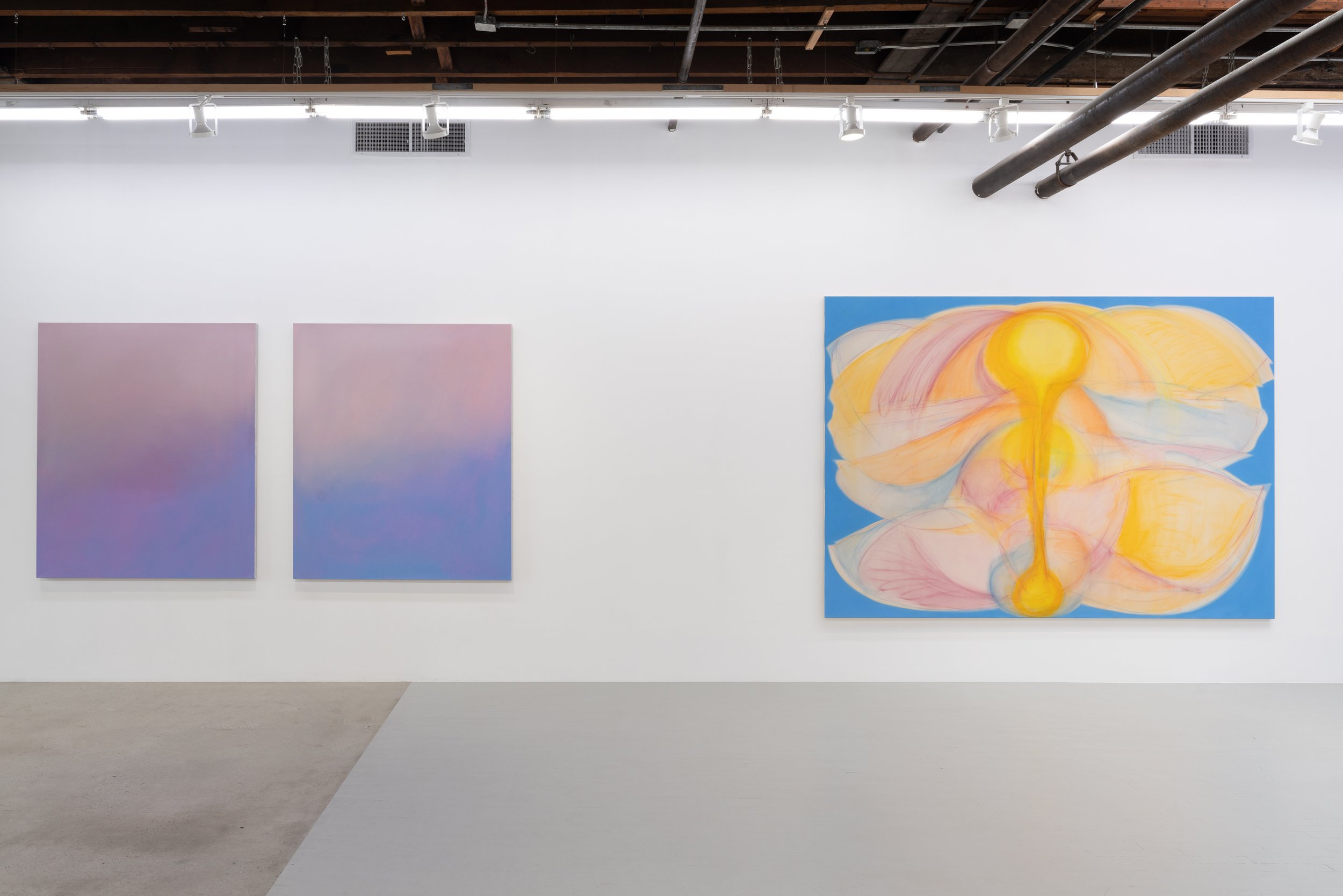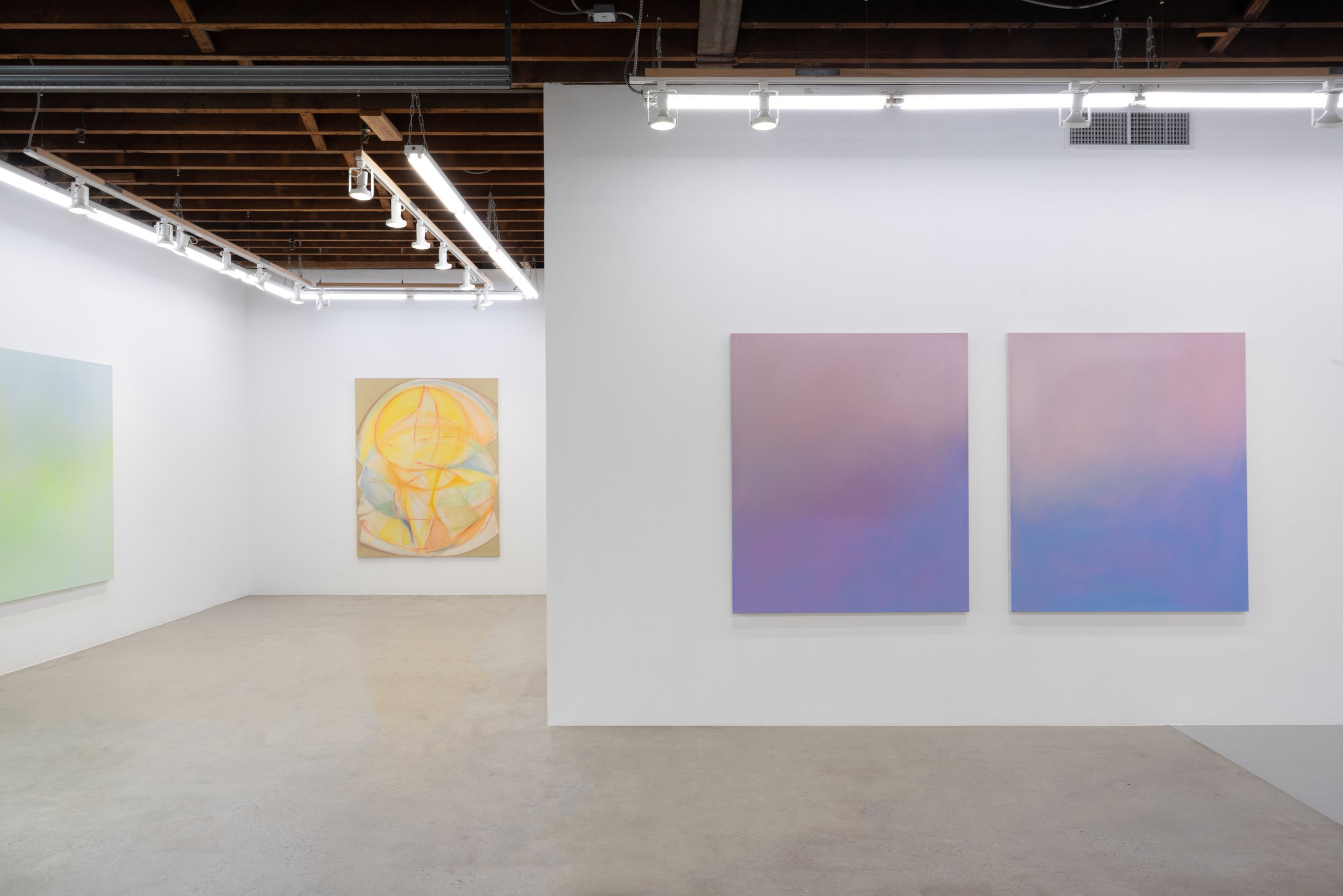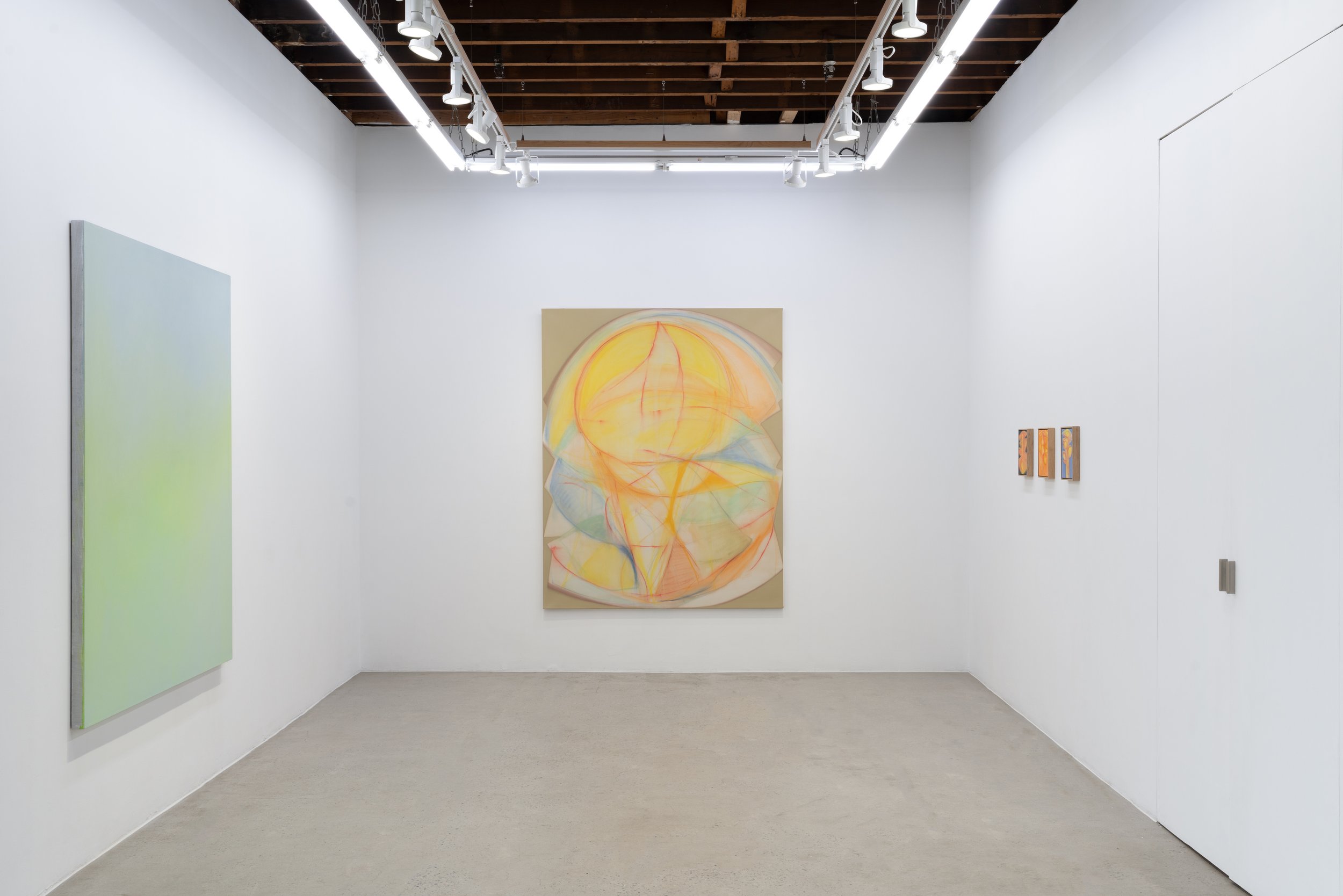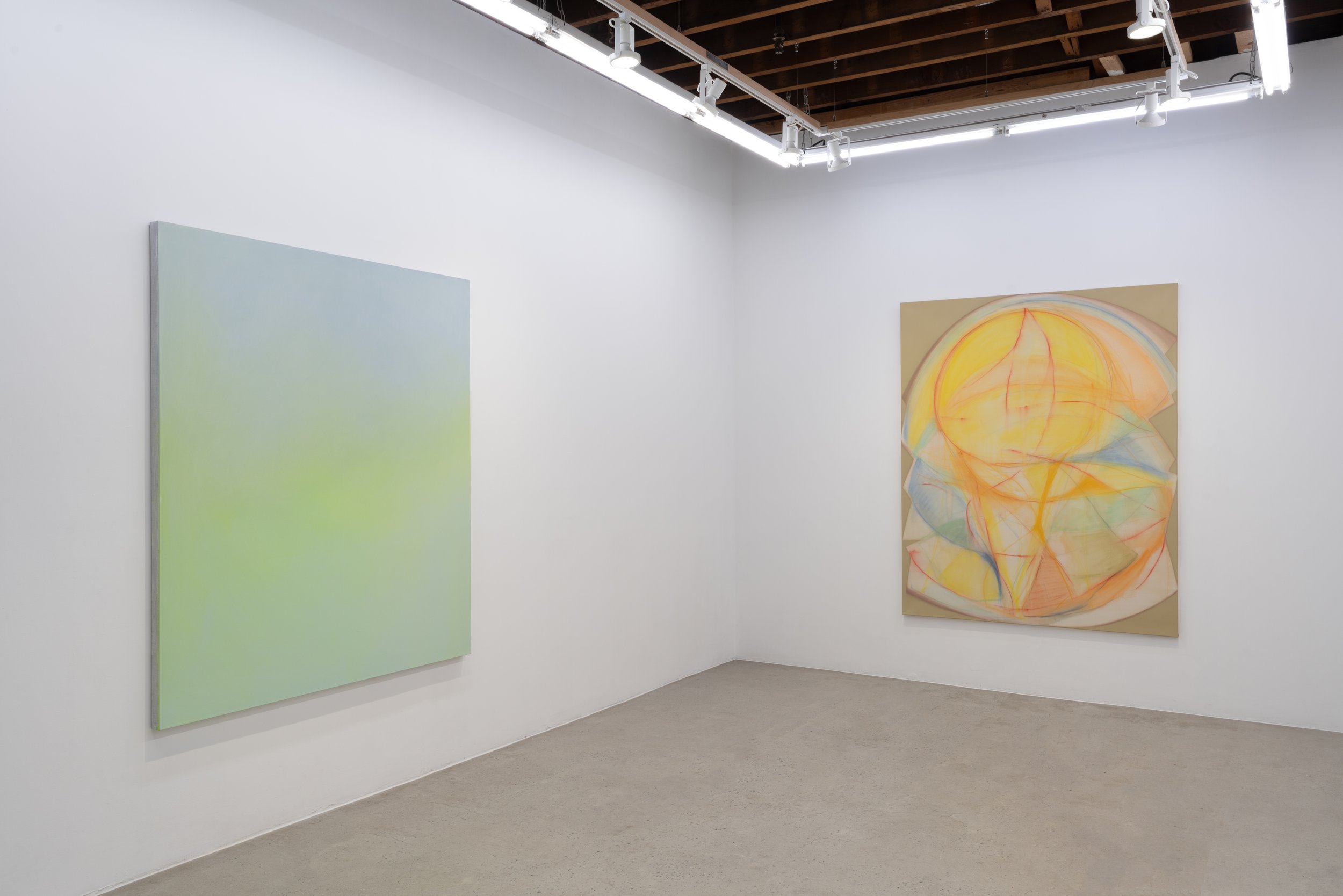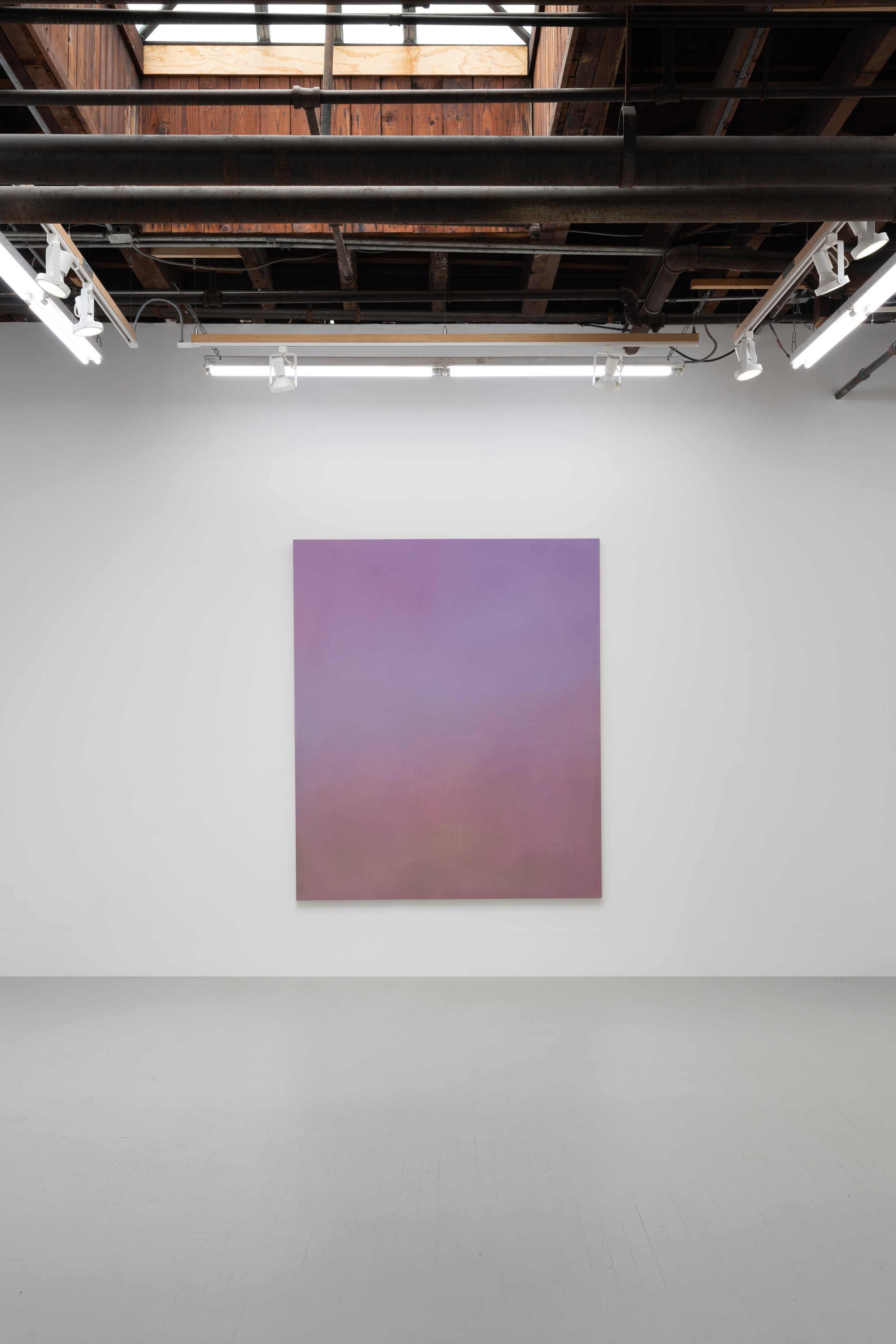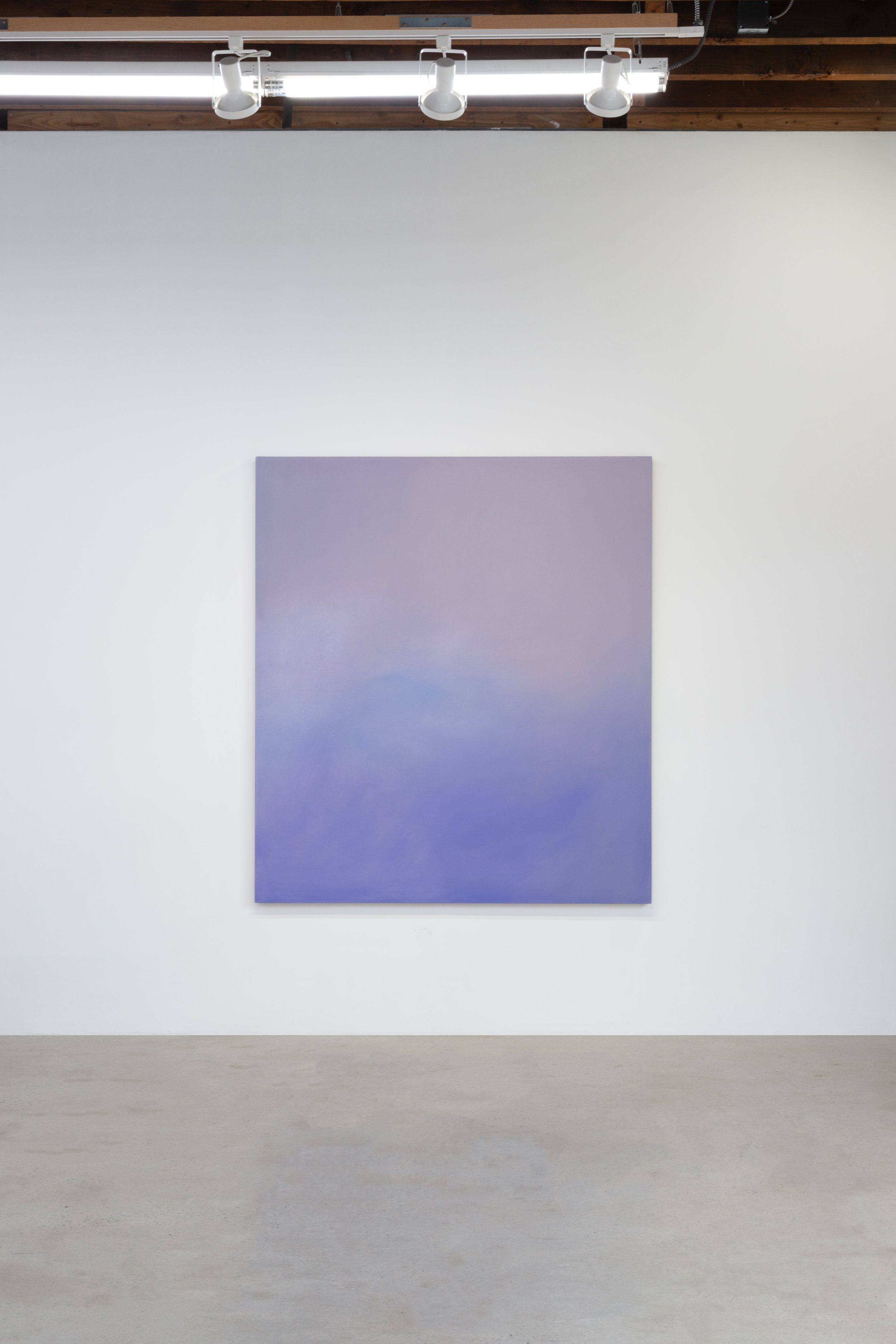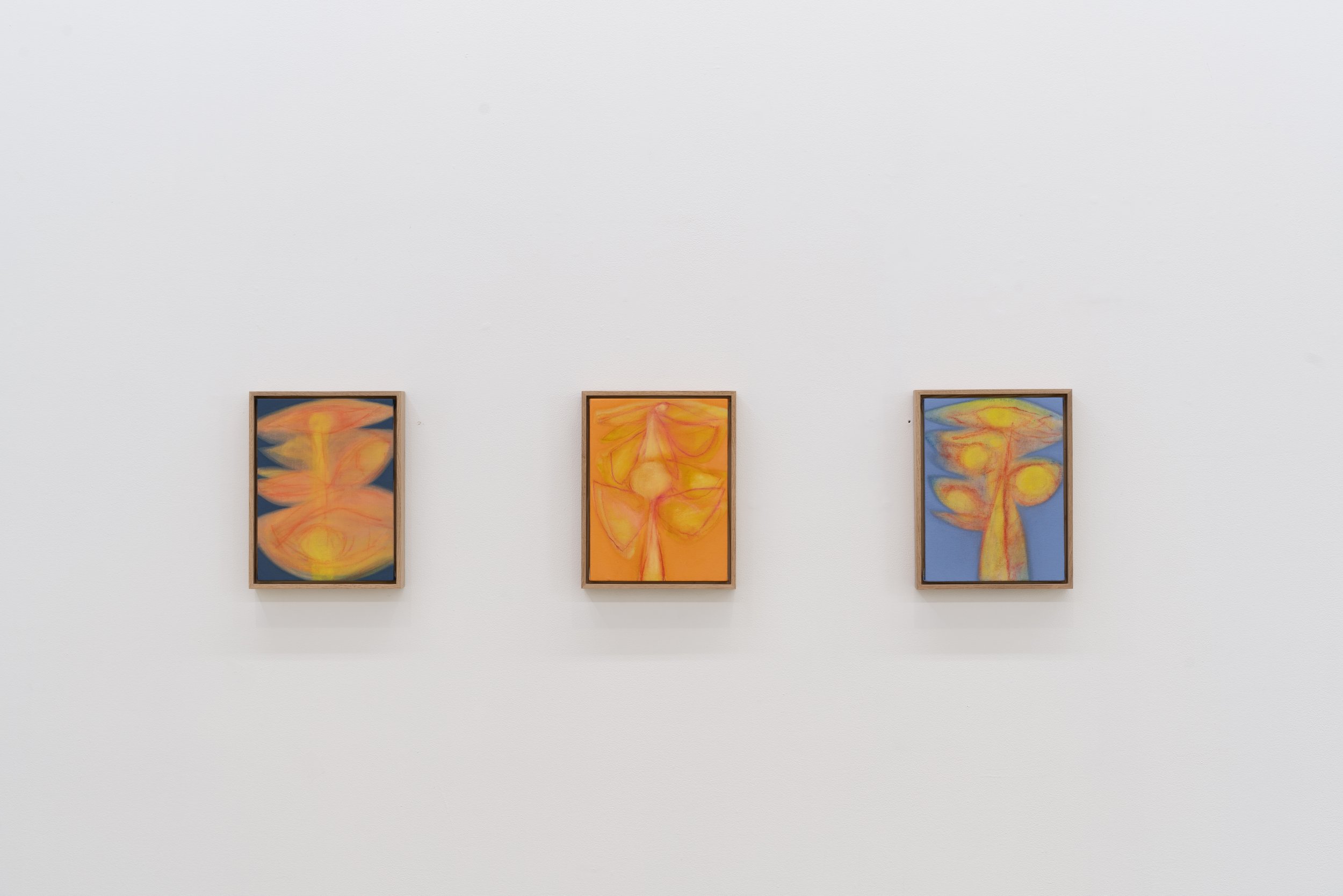CEREMONIES IN LIGHT
MAXIMILIAN RÖDEL + JULIEN SAUDUBRAY
OPENING 02.03.24, 4 — 7PM
ON VIEW UNTIL 03.02.24
CARVALHO PARK is thrilled to announce the opening of Ceremonies in Light, aligning new paintings by Berlin-based artist Maximilian Rödel with Brussels-based artist, Julien Saudubray. The show marks the first time Saudubray’s work is on view in New York. Concurrent with the gallery’s five-year anniversary, Ceremonies in Light opens Saturday, February 3, and will be on view through March 2, at the gallery’s 112 Waterbury Street location in Brooklyn.
For the French philosopher Simone Weil, attention is prayer. Part of what prayer achieves, for Weil, is to reveal the absence of the object at the same time as it conveys its presence. Such thinking feels pertinent to the luminous, weightless zones of color in works by Maximilian Rödel and Julien Saudubray. Their intense, diaphanous grounds harness the complexity of what it is to look at a painting, which can be to feel moved and acted upon by it, to enter a proposed state of being. Weil imagines attention as a suspension of thought: it waits, not seeking anything. Through Rödel and Saudubray’s paintings, it is possible to experience this condition, and to see the epiphanies which might come out of its attainment.
Flooded with light, the eye is drawn to small shifts in tone, the inexhaustible richness of the painted surface. In Rödel’s radiant veils, close observation uncovers all manner of movement beneath a mesmerising stillness. Mauve descends and dissolves into pink, which yields to a creeping violet. Blue is tinted by a lime green delicate as cirrus. Color becomes palpable, more tactile than anything that might be grasped by seeing alone. These paintings absorb; in them the viewer is submerged. Saudubray’s address is no less captivating. Stood before these paintings, the interplay between colors emerges as complex, fluid: does blue enclose the orange, which cascades down the canvas in a spectacle of gravity and turpentine’s effects on paint, or does that column of orange bisect the blue? Where colors meet, their edges, the overlaps within which one tone suffuses another, for Saudubray elicits tension, a frisson that strikes the viewer with the force of static.
Weil’s ideas around thinking and time flash through Saudubray’s sequence titled ‘Watching’. Art might more commonly be associated with looking, a way of seeing which occupies a specific duration, often brief, and has a distinct object, as for the viewer who encounters a painting in a gallery space. Watching suggests observation that is durational or open-ended. It is attentive, in Weil’s sense of the word. In a pair of paintings in ‘Watching’, blue shapes stacked at the centre of the composition chime with their title in their resemblance to the structure of the human eye. But Saudubray is less interested in a literal description of the body and more in the phenomenology of sustained looking. When confronted with an object, arrested in place by some desire to apprehend or understand it, what happens to perception? With time it might deepen, penetrating beneath the illusions of the visible world to access something timeless and eternal. Plato understood this as the realm of ideas. Yet anyone who has attempted such feats will know how liable the mind is to intrude upon perception, to disturb and waylay it, often to playful effect. Other images slide into view. And so an abstract canvas shifts in the manner of a Rorschach blot, with the squashed circular forms of ‘Watching’ transforming from eyes into flames, seeds, fish, petals.
This form of encounter equally shapes Rödel’s work. To use Saudubray’s charged verb, Rödel’s paintings warrant watching rather than mere looking. Moods float to the surface and fade before they risk the banality of being named. You might find yourself coaxing out images, seeking a concrete correlative: dawn skies, sunsets, subterranean depths, primordial ooze, oceanic ripple, lunar landscape. These paintings have the feel of phosphenes, the visual drama the retina produces at rest, its electrical charges still firing even when the eyes are closed.
For Weil, attention was a discipline for forfeiting personality. Only then, with the self and all its limiting preferences and experiences pushed to the background, could larger truths be discussed. Rödel and Saudubray’s practice appears to share this aim. These paintings strive for an erasure of subjectivity. This is achieved partly through an elimination of figurative language, everything which might block the painter from the idea and the idea from the observer, to paraphrase Mark Rothko. The removal of all symbols or details which might anchor a painting to a particular time, place, or person allow them to transcend their present moment and explore fundamental questions about reality, perception, and emotion. Color sits at the heart of these artists’ work, who both eschew traditional symbolism. Saudubray’s yellows, blues, pinks, and oranges contain within them traces of photosynthesis, pollination, germination, and decomposition. For Rödel too, colors are essences, not allegory. Yet his belong to a more obviously numinous realm. His iridescent palette bypasses our given world, and ascends straight to the heavens.
These are paintings of metaphysical inquiry premised upon the viewer’s participation. “Growing”, another sequence of Saudubray’s, exemplifies this reckoning with universal themes. Growth is a state shared by all earth’s organisms big and small, but also describes the layering by which Saudubray realizes a painting. The vast network of biological process which unites the human with the non-human, the macro and the micro, are brought to bear on one another. The result is an affirmation of light, time, sensation, and space as the essence of vitality in all things, the thread — like the lines that score Saudubray’s canvases — connecting people to the environments that sustain them. Rödel handles essential questions through related means. His paintings inspire a meditative state that prompts questions about consciousness itself. What can be rationally comprehended by the institutions of philosophy and science, and what evades their discourses? Perhaps painting exists not so much to capture the more elusive aspects of reality, but to tune in to its frequencies. In Rödel’s work, paintings that resemble portals engulf the viewer, and invite reflection on the deepest recesses and outer reaches of experience. These are gateways into memory and desire; the sublime, the mystical. In this way both Saudubray and Rödel could be said to explore the spiritual, though their work is at once more grounded and intimate than that, less monumental or remote. On the other side of attention, Weil sought out grace. There is no easy way into this state of enchantment, but Saudubray and Rödel provide some possible blueprints.
Essay by Rebecca Birrell, Leverhulme Trust Fellow at The University of St Andrews and Research Associate at the Fitzwilliam Museum, Cambridge, UK. Birrell is author of This Dark Country; Women Artists, Still Life and Intimacy in the Early Twentieth Century.
Maximilian Rödel (b. 1984, Germany) is a Berlin-based artist whose work has been the subject of two institutional solo exhibitions: Celestial Artefacts (2021) at Neuer Aachener Kunstverein, Aachen, and Story of the Forgotten Light (2022) at Kunstverein Arnsberg. Recent exhibitions include Radiations with Galerie Rüdiger Schöttle, Munich (2023, solo); The Inner Light and the Expression of Color, curated by Philipp Bollmann, Galerie du Monde, Hong Kong (2023, group); Phantom Skies with CARVALHO PARK, New York (2022, solo); Documenta 15, Kassel (2022, group); Martina Tauber Fine Art, Munich (2022, solo); Myth of the Navigator, Kanya Kage, Berlin (2021, solo); Rhythmic Engagement, Galerie Zeller van Almsick, Vienna (2021, group); Fortunator, Fiebach, Minniger, Cologne (2019, solo); It Started with a Spark, CARVALHO PARK, New York (2019, two-person + performance series); Pygmalion’s Garden, Studio Picknick, Berlin (2018, solo). Rödel was a master student of Robert Lucander (2011), following his studies in Fine Art at the University of Fine Arts Berlin (2008), and undergraduate studies at University of Arts Braunschweig (2005). His first publication, Celestial Artefacts, was published on the occasion of his institutional solo exhibition with Neuer Aachener Kunstverein.
Julien Saudubray (b. 1985, France) lives and works in Brussels, Belgium. He graduated from the École Nationale Supérieure des Beaux Arts de Paris in 2012. Recent solo exhibitions include those with JVDW Gallery, Düsseldorf (2023); Valerius Gallery, Luxembourg (2023); COB Gallery, London (2023); Waldburger Wouters, Brussels (2022, 2021); Anna Zorina Gallery, Los Angeles (2022); NBB galerie, Berlin (2022); and Ketabi Bourdet Contemporary, Paris (2022). He was granted by the Academy of Fine Arts of Belgium in painting, was the winner of Watch This Space biennial prize in 2016, and was recently granted by The Federation Wallonie Bruxelles for the Médiatine prize. Residencies include those with Fondation CAB, MAAC Brussels, and Fondation Boghossian, Villa Empain, Brussels. Saudubray has represented the Federation Wallonie Bruxelles for the first edition of Art Antwerpen in 2021. Upcoming in 2024 are exhibitions in Switzerland, New York, and Paris.

